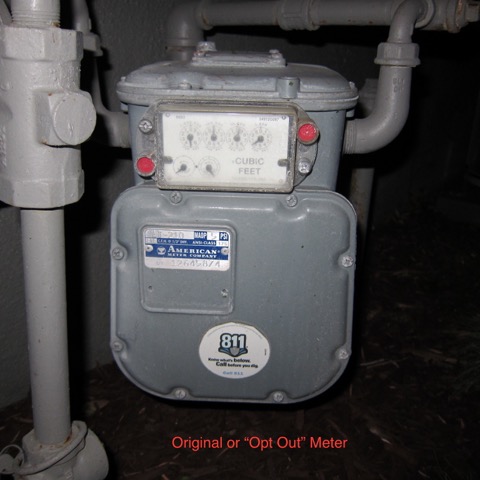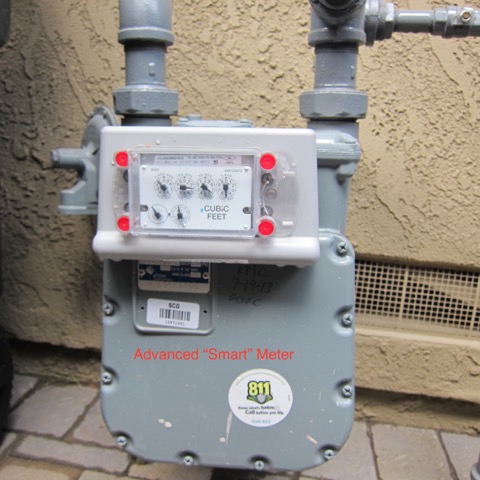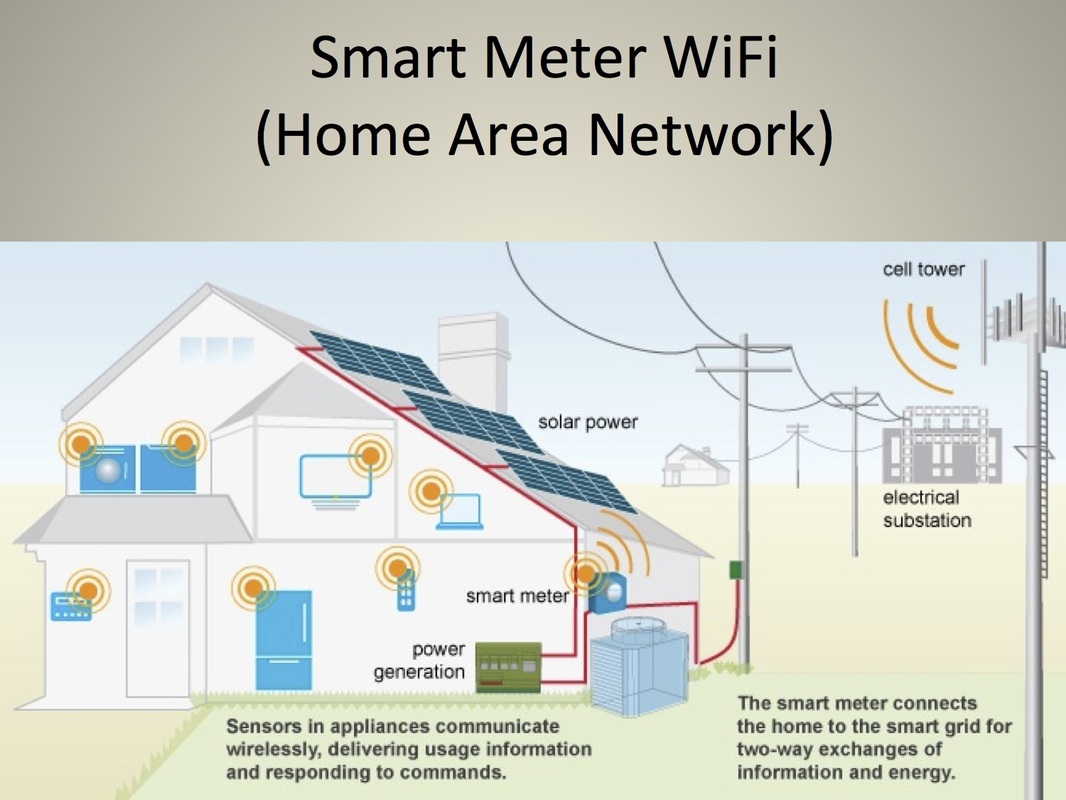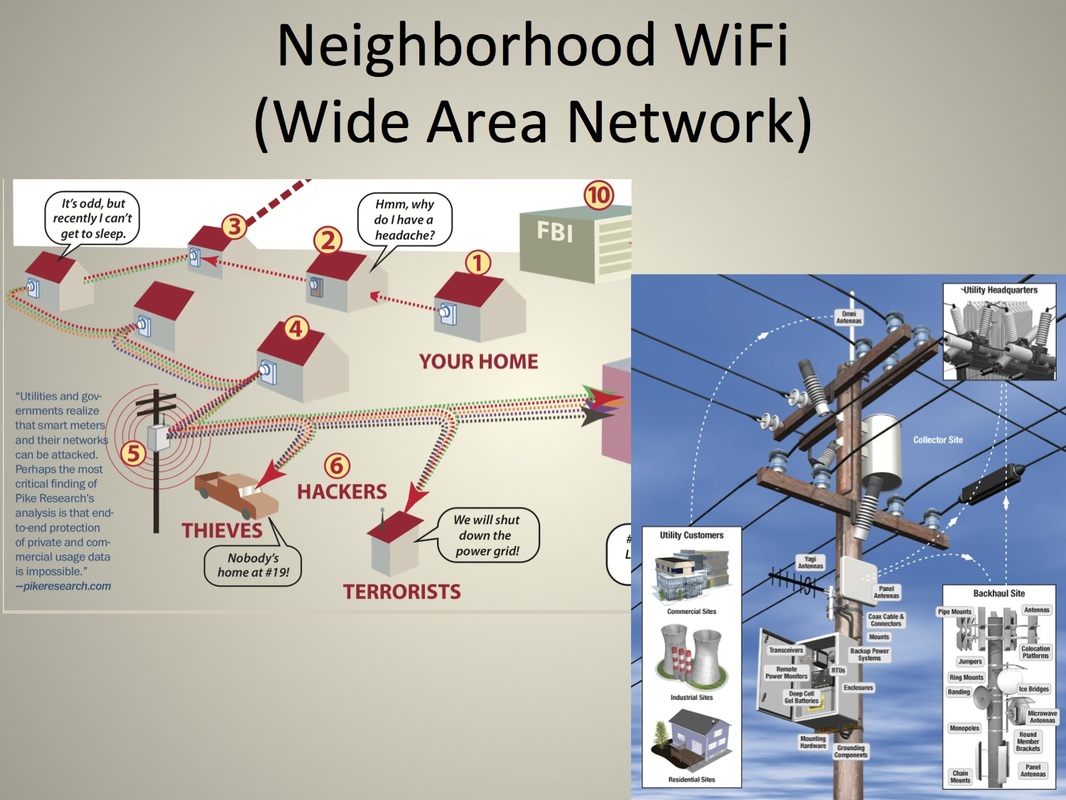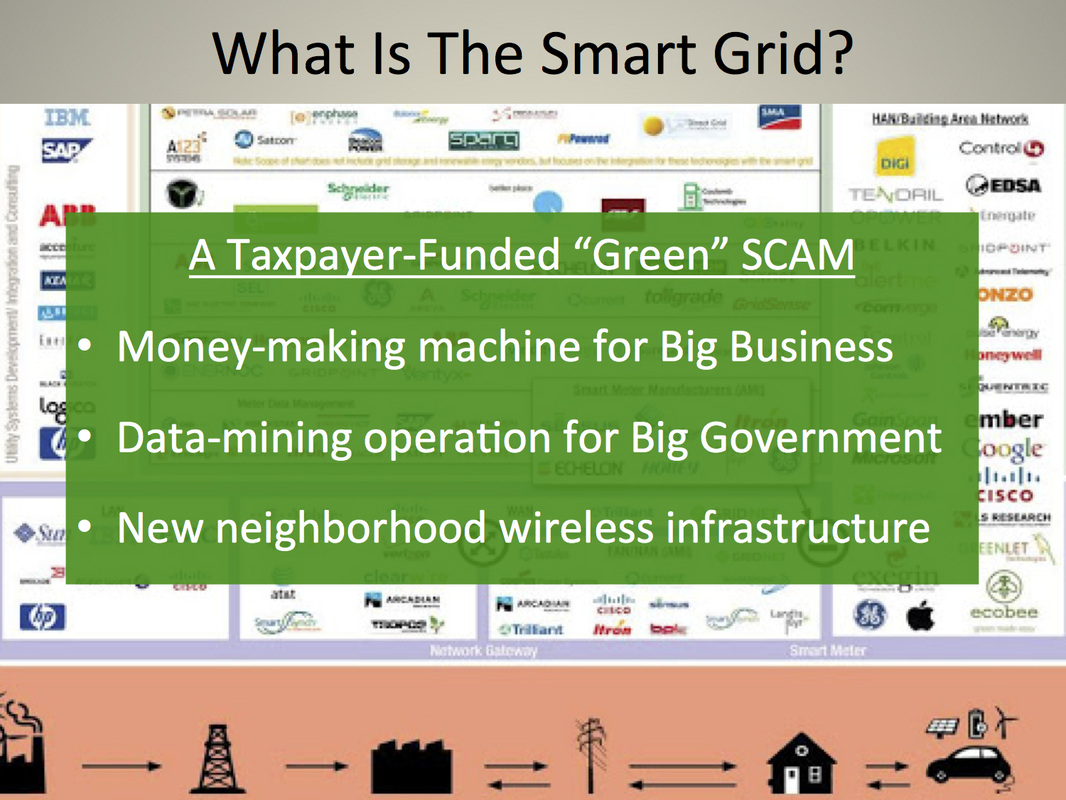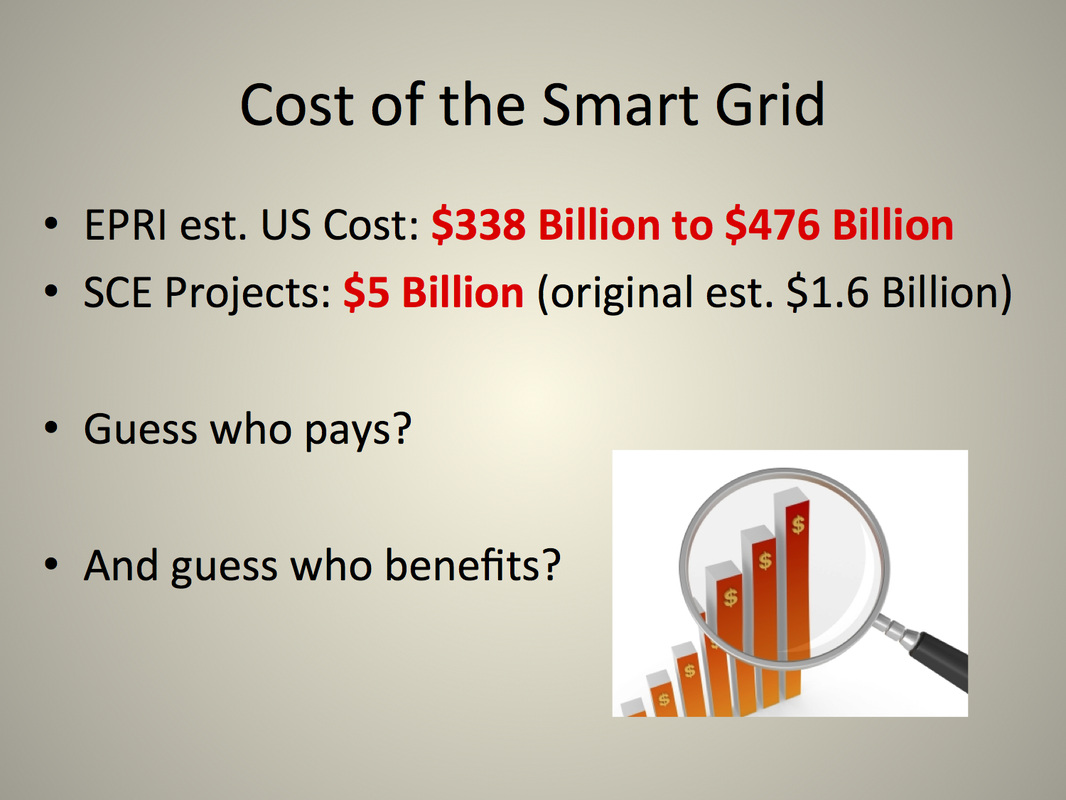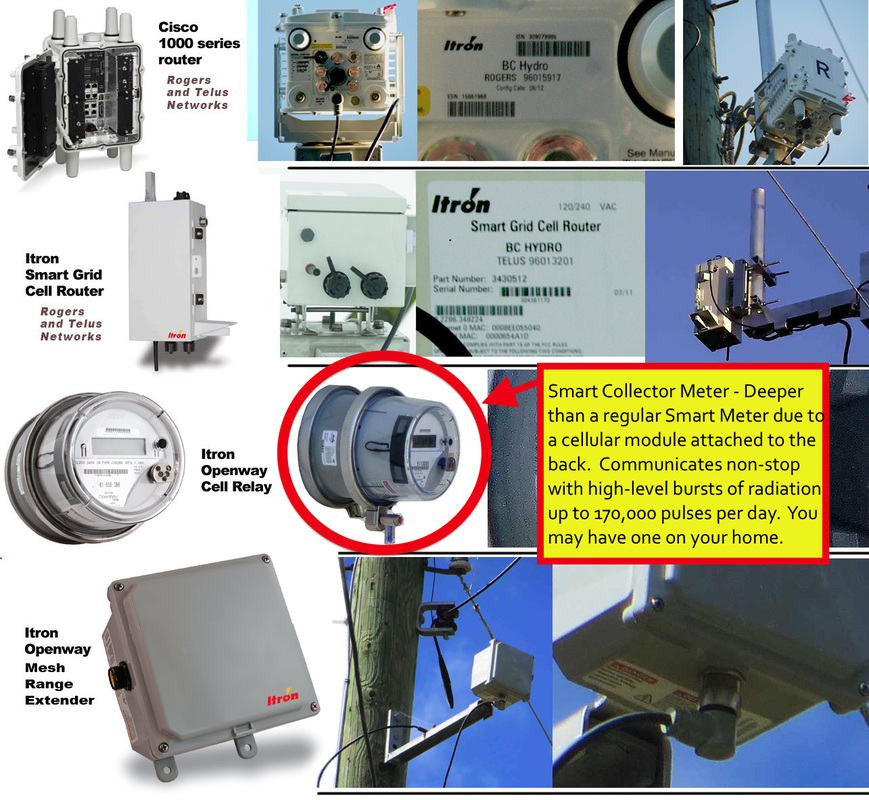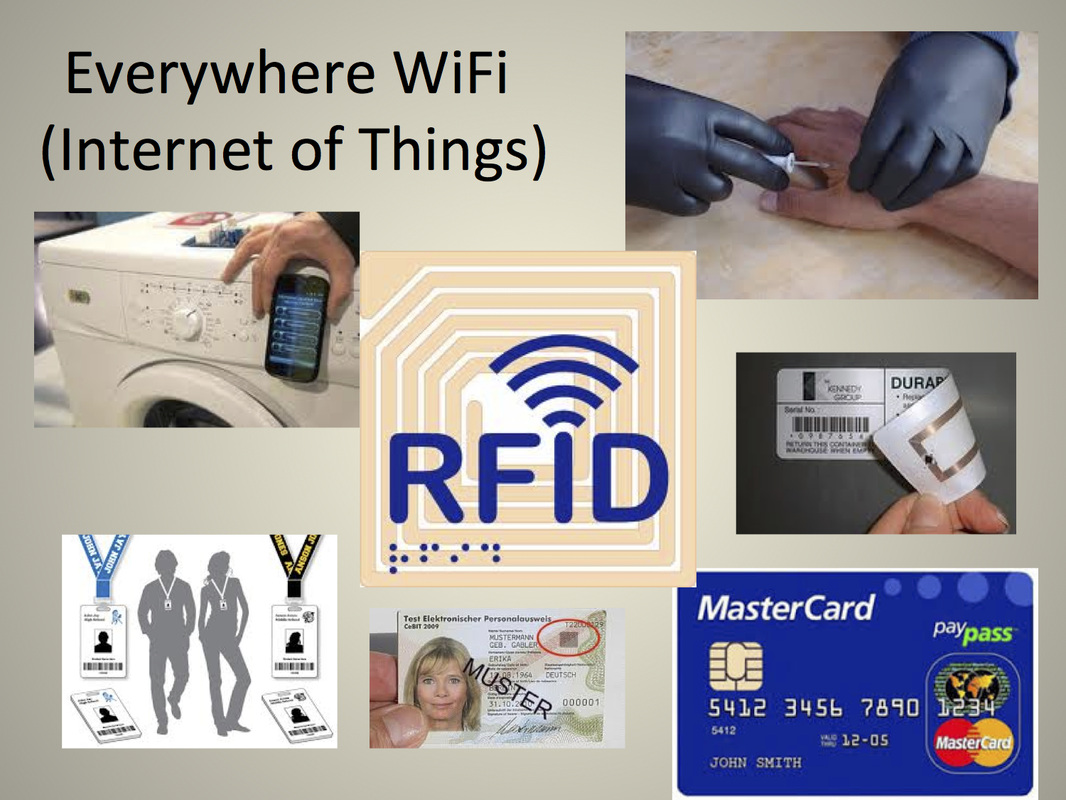What is a Smart Meter?
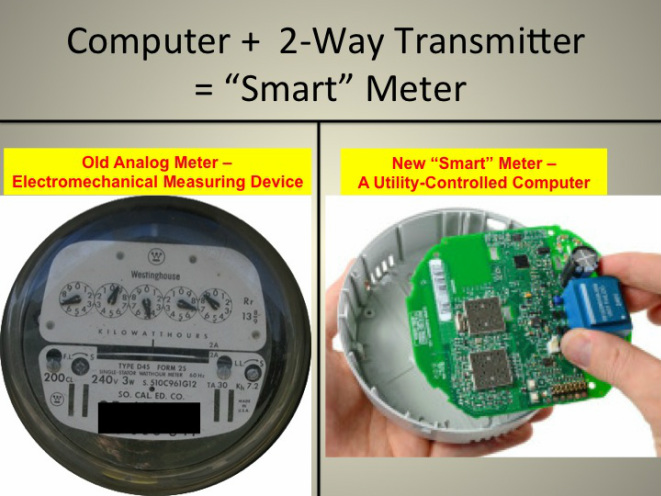 Elster REX2 Smart Meter
Elster REX2 Smart Meter
Itron's OpenWay Centron Smart Meter, assembled in S. Carolina, contains Accent's AMIgrid2 chip (manufactured in China).
The Electric Company
Currently, SCE is in the process of removing all fully functional existing electromechanical analog meters (with 30 year life spans) to computerized wireless Smart Meters. Our current analog meters operate without electricity continuously measuring the usage in our homes. The usage is displayed on the meter, read by an SCE employee and billed by the number of watts used.
Replacing the traditional meter is the new "Smart Meter" that has a 15 to 20 year life span and, contrary to analog meters, require electricity to function. SCE employees will no longer come to your home to read the meter as all electric usage will be collected and transmitted wirelessly back to SCE through pulsed Radio Frequency (RF) on a continuous 24/7 basis.
Note: SCE literature claim that the Smart Meters pulse frequency is 45 seconds per day. However, because these meters need to continuously communicate with each other, called “chatter”, the pulsed radiation is virtually constant and at the same RF level as the data transmission radiation level.
Itron OpenWay® CENTRON® Smart Meter (used by SCE), "communicates to utility systems allowing them to leverage applications such as time-of-use and peak pricing data, home networking and demand response." Some of the features:
Using ZigBee firmware, the Smart Meter collects details of energy consumption every 15 minutes and transmits the data via wireless (RF) Cell Relay signals back to the SCE Collection Engine.
The Gas Company
STAR 3000 Network Series Gas MTU or Meter Transmission Unit (Southern California Gas) comes with dials, a computer and a transmitter operating with a 450 to 470 MHz FCC license. Installations are planned to begin in late 2012 through 2017 and cost customers an additional $2.00 per month (just for the new meter). It is very difficult to tell the difference between the original (Opt Out) meter and the Advanced Smart Gas Meter. There are NO MARKINGS to say that the new meter has a FCC-regulated transmitter inside. Isn't that against FCC law?
How does a customer know that the unit is ‘Advanced’ so they can have a choice to opt out?
The Advanced Smart Meter allows for two-way communication between the customer’s meter and the utility. Two-way communication benefits the utility company. Meter documentation such as “…facilitates over-the-air configuration of devices” and “can send data to the meter” indicates that the meter can be remotely altered. How exactly can the meter be reconfigured? What sort of data is being sent over? However, could they use it in the future? How will these changes that the customer has no control over effect their therm use? Could it be hacked like all other wireless devices?
The Electric Company
Currently, SCE is in the process of removing all fully functional existing electromechanical analog meters (with 30 year life spans) to computerized wireless Smart Meters. Our current analog meters operate without electricity continuously measuring the usage in our homes. The usage is displayed on the meter, read by an SCE employee and billed by the number of watts used.
Replacing the traditional meter is the new "Smart Meter" that has a 15 to 20 year life span and, contrary to analog meters, require electricity to function. SCE employees will no longer come to your home to read the meter as all electric usage will be collected and transmitted wirelessly back to SCE through pulsed Radio Frequency (RF) on a continuous 24/7 basis.
Note: SCE literature claim that the Smart Meters pulse frequency is 45 seconds per day. However, because these meters need to continuously communicate with each other, called “chatter”, the pulsed radiation is virtually constant and at the same RF level as the data transmission radiation level.
Itron OpenWay® CENTRON® Smart Meter (used by SCE), "communicates to utility systems allowing them to leverage applications such as time-of-use and peak pricing data, home networking and demand response." Some of the features:
- ZigBee 2.4 GHz radio transceiver (WiFi),
- 900 MHz radio (cellular)
- microprocessor for application and communication processing and
- high speed hardware trace probe.
Using ZigBee firmware, the Smart Meter collects details of energy consumption every 15 minutes and transmits the data via wireless (RF) Cell Relay signals back to the SCE Collection Engine.
The Gas Company
STAR 3000 Network Series Gas MTU or Meter Transmission Unit (Southern California Gas) comes with dials, a computer and a transmitter operating with a 450 to 470 MHz FCC license. Installations are planned to begin in late 2012 through 2017 and cost customers an additional $2.00 per month (just for the new meter). It is very difficult to tell the difference between the original (Opt Out) meter and the Advanced Smart Gas Meter. There are NO MARKINGS to say that the new meter has a FCC-regulated transmitter inside. Isn't that against FCC law?
How does a customer know that the unit is ‘Advanced’ so they can have a choice to opt out?
The Advanced Smart Meter allows for two-way communication between the customer’s meter and the utility. Two-way communication benefits the utility company. Meter documentation such as “…facilitates over-the-air configuration of devices” and “can send data to the meter” indicates that the meter can be remotely altered. How exactly can the meter be reconfigured? What sort of data is being sent over? However, could they use it in the future? How will these changes that the customer has no control over effect their therm use? Could it be hacked like all other wireless devices?
The Water Company
Local water departments will also be replacing the current meters with RF controlled meters that will communicate wirelessly with the Smart Meter attached to your home. Some residents have raised concerns about the health effects from the frequencies.
What is the Smart Grid?
The Smart Grid is a wireless communication infrastructure which, currently, has two functions: control of services and billing. Because it collects real-time electricity, gas and water usage details, rates can vary during the day (aka Time of Use or TOU rates). The utility monitors and controls when and where their services are provided. The benign meters of the past that merely collected monthly kilowatts used are gone.
Touted as way for customers to "save money", Southern California Edison plans on spending $5 BILLION for the Smart Grid.
Touted as way for customers to "save money", Southern California Edison plans on spending $5 BILLION for the Smart Grid.
|
Smart Grid does NOT:
Smart Grid is taxpayer-paid revenue system that will:
Could the Smart Grid create a new currency using Carbon Credits to restrict utility services under California's Cap and Trade requirements? Will energy become the new money to be restricted and traded as is done with Smart Coin Meters? |
|
Internet of Things (IOT) - Smart Grid Mesh Network
WiFi networks work by connecting antenna-controlled devices within a network and allowing such devices to communicate among each other. The Smart Grid Mesh Network takes the WiFi and cellular network concept and expands it exponentially using millions of Smart Meter endpoints, pole-mounted routers, relays, range extenders to create large-scale WiFi network over a broad area like a city. Note: For every 500 or so homes, a toxic Collector Smart Meter is installed which works to communicate data back to pole-mounted routers. You do NOT want one of these forced on your home. Towns such as Santa Clara, California have (blanketed the area with microwave radiation and) created Smart Meter Mesh Network for their entire city through the utility-based Smart Meters. "We are the first utility in the nation to offer free Wi-Fi as part of the smart meter rollout," said Larry Owens, a manager with Silicon Valley Power, Santa Clara's municipal power company. This WiFi cannot be shut off. When there is WiFi everywhere, items that are chipped can be monitored and tracked. Smart Meters contain Zigbee radio chips which communicate with Zigbee-chipped appliances such as refrigerator, washer, dryer, pool equipment, toaster oven, hair dryer, hot water heater, security system, and lights.
|
How the Smart Grid Works
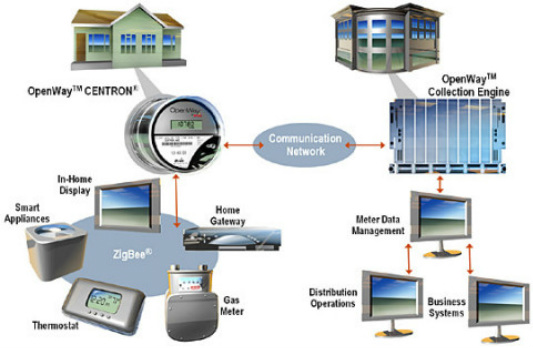 Itron's Smart Grid
Itron's Smart Grid
It is the plan of power and energy authorities worldwide to replace current disk-style (analog) electric, gas and water meters with digital "Smart Meters." These are wireless devices (computers) that use radiofrequency (RF) waves to monitor use and transmit information about each household's consumption. They are being enthusiastically promoted by governments and industry as a "green initiative," supposedly enabling utility companies to efficiently monitor consumption during peak and "down" times, and encourage wise use of energy and resources. The vision is that these "Smart Meters" will operate within a wider ranging "Smart Grid."
The information-carrying radio waves, transmitting (continuously) 24/7, will effectively blanket homes and neighborhoods with (WIFI) RF radiation that could adversely affect not just humans, but all living systems. In particular, these meters have the potential to affect not only electro-hypersensitive persons, but children and pregnant women, persons with medical conditions such as heart arrhythmia, those with compromised immune systems, and others who rely on medical and/or metal implants or equipment. In addition to health concerns, Smart Meters bring with them questions about (privacy, security, pricing) fire and security hazards.
The costs of installing the new digital wireless meters is substantial, their accuracy is debatable, and there is much controversy as to whether or not the readings serve to decrease power use, or simply to increase power costs to consumers.
Serious disagreement continues between the electric utility companies and thousands of private homeowners who refuse the forced installation of Wireless Smart Meters on their homes without consent. Customers want the Utilities to listen to their valid concerns before pressing ahead with this program.
---From Citizens for Safe Technology.org
SCE received $79,000,000 to build a Smart Grid in the City of Irvine to literally provide a living laboratory with Smart Grid technology.
The information-carrying radio waves, transmitting (continuously) 24/7, will effectively blanket homes and neighborhoods with (WIFI) RF radiation that could adversely affect not just humans, but all living systems. In particular, these meters have the potential to affect not only electro-hypersensitive persons, but children and pregnant women, persons with medical conditions such as heart arrhythmia, those with compromised immune systems, and others who rely on medical and/or metal implants or equipment. In addition to health concerns, Smart Meters bring with them questions about (privacy, security, pricing) fire and security hazards.
The costs of installing the new digital wireless meters is substantial, their accuracy is debatable, and there is much controversy as to whether or not the readings serve to decrease power use, or simply to increase power costs to consumers.
Serious disagreement continues between the electric utility companies and thousands of private homeowners who refuse the forced installation of Wireless Smart Meters on their homes without consent. Customers want the Utilities to listen to their valid concerns before pressing ahead with this program.
---From Citizens for Safe Technology.org
SCE received $79,000,000 to build a Smart Grid in the City of Irvine to literally provide a living laboratory with Smart Grid technology.
Siting and Easement Rights Violated
SCE is in violation of their utility easement. The company is not allowed to install a device which interferes with the homeowner's health, privacy and safety.
SCE does not have an easement to install wireless telecommunications facility and violate personal property siting rights on the premises of a homeowner without their express permission and that of the local governing officials.
SCE does not have an easement to install wireless telecommunications facility and violate personal property siting rights on the premises of a homeowner without their express permission and that of the local governing officials.
An easement is a clause in your contract with your utility which allows them access to their equipment, for meter-reading and maintenance. Check with your house deed to see if that is part of the contract. Your utility may also have the information about the particulars of their easement.
But many people have called into question whether installation of the “smart” meter—which includes telecommunications equipment and marks an unprecedented change in metering, blanketing your home in a class 2B carcinogen—actually qualifies as “maintenance”! --- Stop Smart Meters!
Independent Evaluation
According to a July 2010 Evaluation of Residential Smart Meter Policies (pdf), the Smart Meter has approximately 30 separate functionalities. Most of these functionalities will primarily benefit the utility unless expressly employed toward end-consumer programmes with the support of regulation and supportive market structures."
The CPUC and the utilities have developed an integrated package of smart metering plus demand response measures of direct load control and time differentiated pricing tariffs.
All of the utilities in California have now received permission to rollout smart meters as part of a larger efficiency plans – the main demand response programmes in use are critical peak pricing, critical peak rebates, time of use and automated AC thermostats. Customer feedback and education will also be used but sometimes as a support to the pricing programmes only.
On top of this, each utility has asked for extra funds to provide services which go beyond the minimal requirements of the smart metering regulation. There is good evidence that private industry as well as the utilities now have a substantial financial stake in the success of these programmes creating green jobs and business opportunities.
The positive cost/benefit for the utilities is directly related to how successful they are with their demand response programmes (due to the regulatory framework in place). The overall success of the meter rollout will now be dependent on the ability of the utilities and private companies involved to educate and interest consumers. Rollout is due to be completed in 2012 for most utilities and the full impact of the programmes may take a couple of years after this to be fully realized.
The CPUC and the utilities have developed an integrated package of smart metering plus demand response measures of direct load control and time differentiated pricing tariffs.
All of the utilities in California have now received permission to rollout smart meters as part of a larger efficiency plans – the main demand response programmes in use are critical peak pricing, critical peak rebates, time of use and automated AC thermostats. Customer feedback and education will also be used but sometimes as a support to the pricing programmes only.
On top of this, each utility has asked for extra funds to provide services which go beyond the minimal requirements of the smart metering regulation. There is good evidence that private industry as well as the utilities now have a substantial financial stake in the success of these programmes creating green jobs and business opportunities.
The positive cost/benefit for the utilities is directly related to how successful they are with their demand response programmes (due to the regulatory framework in place). The overall success of the meter rollout will now be dependent on the ability of the utilities and private companies involved to educate and interest consumers. Rollout is due to be completed in 2012 for most utilities and the full impact of the programmes may take a couple of years after this to be fully realized.
